|
|
Post by Arjan Hut on Jan 23, 2019 6:38:25 GMT -5
31 The original Darnell film
See also16 The camera original of the Nix film21 Several frames from the Towner film30 The original Wiegman film 52 An accurate account of the Zapruder film's time in the governments hands66 The original and complete Alyea Film96 The original Jack Daniëls filmDenis Morissette pointed these two videos of Jimmy Darnell footage out in a Facebook post. The videos have been recently released via the UNT site and are from the WBAP/KXAS channel, these days known as NBC5 In the first clip you can see Darnell looking at a strip of film on a reel, this strip is of the front of the T.S.B.D. segment. Now this may not even be his film, but Dave Wiegman instead. I am simply amazed that he is looking at this film, which supposedly disappeared into NBC’s archives in N.Y. Yet here we are looking at a very good copy of it. This is the film no one knows where it is, by the looks of it from this segment and the next the copy they have digitized for these videos looks of great quality, question is at what resolution did they digitize the film? And where is it now? (Bart Kamp, Prayer-Man.com, 7-30-19) WBAP cameraman James Darnell captures the immediate aftermath of the assassination. Darnell filmed the activity behind the fence on the grassy knoll. "Alan Dale asked Stephen Fagin after a talk during the Lancer Conference in Nov. 2018 about whether the 6th Floor Museum had a copy of the Darnell film and if so when could scholars get access to it? This then got the reply: “Funny as you mention this we are about to give access to a digital 2K copy of the Darnell film in our reading room”. That is partial good news, its existence has been acknowledged, but 2K is not 4K which it should have been. Since this film could give a lot of info on T.S.B.D. employees I would have not spared any money to get the best optimal result from the 16 mm film. ( Prayer-Man.com, January 12, 2018) Parts in private hands, notes Denis Morissette on his website: Where are the Original of these Films Taken in Dealey Plaza?

A man who witnessed four decades of history through the lens of a camera was remembered as "a pioneer" in
television, a stickler for "honesty and integrity" and "a wonderful best friend." Retired NBC 5 photojournalist Jimmy Glen Darnell, 82, was laid to rest Wednesday after he died last Friday, Sept. 29. (...) Darnell was in the motorcade in Dealey Plaza as a cameraman on Nov. 22, 1963. He was riding in a vehicle several cars behind Kennedy. He heard a popping sound, thought it was a car backfiring, then like everyone else that tragic day, realized it was the sound of gunfire. The president had been shot. In recounting the story, Collins said "Jimmy followed and filmed, wheels always turning, on the go, energetic, chasing the story." Darnell eventually made his way to the police department, where his new bride Ruth was on duty. The hall was crowded with news crews when Ruth came walking in with several detectives, Collins said. Several jumped to the conclusion that the dark-haired woman with police was Marina Oswald, wife of assassin Lee Harvey Oswald. ( Jimmy Darnell, Longtime NBC 5 Photojournalist, Dies at 82, Oktober 17, 2017)
|
|
|
|
Post by Arjan Hut on Mar 15, 2019 13:10:41 GMT -5
66 The original and complete Alyea Film
Related:16 The camera original of the Nix film19 The Pitzer Film21 Several frames from the Towner film30 The original Wiegman film31 The original Darnell film32 Unseen Darnell footage33 The Cook film
91 Record of Ellsworth questioning Oswald
Erasing the Past...DiscussionsMR. GUNN: Q: Look at the next one on the list, please, the Thomas Alyea film. What is the earliest generation copy that you have of the Alyea film? A: I don’t know. I had a multi-generation copy, which was rather contrasty. And I don’t have any idea what the source was. It was much later than the original. Q: Have you ever had access to an earlier source? A: Not that I’m aware of. I’ve seen- I have seen Alyea footage-earlier prints that I did not have access to, which had footage that I had never seen before. But it was definitely his film. Q: Okay. We’d like you to bring that-your earliest generation of the Alyea film, as well. Have you ever seen the original Alyea film? A: The camera original? Q: Camera original. A: Not that I’m aware of, no. (Robert Groden, ARRB deposition, 1996) WFAA-Reporter Tom Alyea was one of the first people to reach the 6th floor of the Texas School Book Depository. Alyea was one of the people to see the 6th floor as it was left behind by the shooter(s). The reporter managed to get his film out of the depository by throwing it down to a colleague on Elm Street. The original and complete film vanished. Only some incomplete fragments remain. (Flip de Mey, Cold Case Kennedy, p. 186/187)  Tom Alyea interviewed in front of the book depository in 1964. Tom Alyea interviewed in front of the book depository in 1964.
The Warren Committee showed no interest in his footage and he was not asked to testify.
|
|
|
|
Post by Arjan Hut on Mar 15, 2019 14:00:04 GMT -5
67 Bob Jackson’s Houston Street PictureOne photograph taken by Dallas Times Herald photographer Bob Jackson was so obviously in opposition to the official police position that it was suppressed by late 1966. Jackson was riding in one of the news photographer’s cars in the motorcade with Dallas Morning News photographer, Tom Dillard. As Jackson’s car approached the Depository building and travelled north on Houston Street, between Main Street and Elm Street, Jackson snapped a picture. At the time, the Kennedy car was already on Elm Street and was probably close to the position where the first shot was fired. Jackson’s car was eight cars behind Kennedy’s (about twenty car lengths). Jackson can be seen taking this picture in the Robert Hughes film and in some of the TV footage taken by other photographers. He also testified that he took the picture. When the author asked Masiotta about the Jackson photo in early 1967, he became very flustered and claimed to know nothing about it. Jackson himself was finally located and, when asked about it, became very angry and denied taking a picture. That photograph has never been seen by anyone outside of the Times Herald staff. It’s not difficult to speculate about what it probably showed, since the Hughes film, the Weaver photo, the Dillard photo and the Tom Alyea TV sequence all show the same thing. Jackson’s photo, without doubt, showed "Oswald’s window" in the Depository building empty when Oswald should have been in it—an embarrassing counterpoint to Jackson’s testimony that he saw someone in that window with a rifle. If Jackson’s photo (or anyone else’s for that matter) showed Oswald in the sixth floor window, the whole world would have heard about it on November 22, 1963. (Richard Sprague, The Taking of America 1, 2, 3 p. 59) 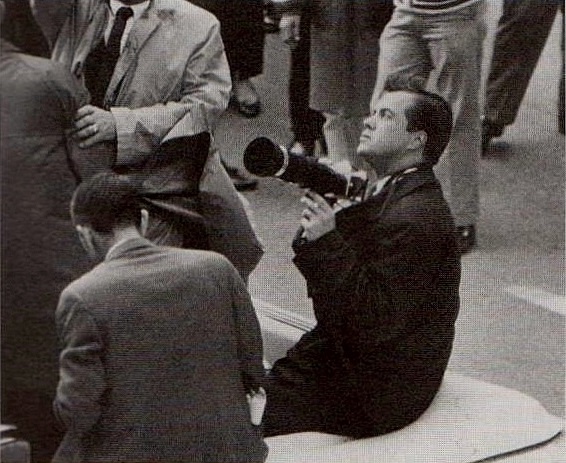 “Jackson had just his emptied camera with the telephoto lens on his lap and another camera on a strap around his neck, but as he later wrote, “It happened too fast, then, for me to get a photo of it’ (Richard Trask, Pictures of the Pain, page 440)
|
|
|
|
Post by Arjan Hut on Apr 9, 2019 13:29:19 GMT -5
91 Record of Ellsworth questioning Oswald
Related:58 Forrest Sorrel's notebook
66 The original and complete Alyea Film81 Fourteen Hour recording of Oswald's interrogation86 Army intelligence records on Fort Hood arms theft90 ATF Files on Masen/Nonte case
(I would certainly like to see some record of Ellsworth's questioning of Oswald, supposedly in connection with his rifle.) I understand from Mark Zaid that various ATF files from that era can not be located. (Paul Hoch, Echoes of Conspiracy, 1995)  Still from Alyea film Still from Alyea filmFurther adding to the my story of the rifle, ATF agent Frank Ellsworth, who participates in a second search of the book depository conducted after 1:30 PM on this date, according to a Secret Service document, confirms that the Mannlicher-Carcano was found by a DPD detective on the fourth or fifth floor of the building, "not on the same floor as the cartridges."[the sixth floor] He adds:"I remember we talked about it, and figured that he [LHO] must have run out from the stairwell [to the lower floor] and dropped it [the Mannlicher] as he was running downstairs." (Ira David Wood III, 22 November 1963: Chronology)
|
|
|
|
Post by Arjan Hut on May 29, 2019 9:37:42 GMT -5
130 FBI report with Seymore Weitzman's detailed description of the rifle found
related:
59 Arnold Rowland's signed statements of November 26th , 29th , December 1st and 3rd or 4th63 7.65 shell found in Dealey Plaza on 12/02/6364 Nearly whole bullet removed from JFK66 The original and complete Alyea FilmThe Commission itself heard testimony from Curry, Fritz, Boone, Day, and Wade on the "Mauser." The only witness blamed for the erroneous identification in the Report is the only witness who did not appear before the Commission; he was deposed by Counsel Ball. In that deposition, Ball and Weitzman discuss an FBI interview with Weitzman, on an unknown date, apparently on the basis of an FBI report on that interview. This report is not found anywhere in the Exhibits. However, from the deposition alone it is clear that Weitzman described the rifle found in the Book Depository in considerable detail to the FBI. The metal was blue; the wood was dark oak brown. The description of the rifle in the Report (WR 81 and 553-555) does not include the color of the metal or the wood. (Sylvia Meagher, Accesories after the fact, 1976 edition, p. 99) 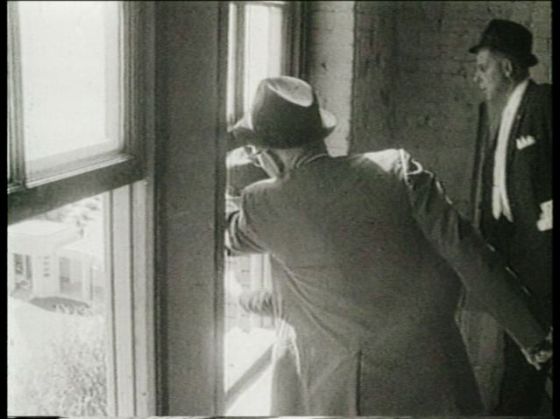 Seymore Weitzman (right) in (what remained of the) the Alyea filmThis item appears to be no longer lost or withheld:Erasing the Past...Discussions Seymore Weitzman (right) in (what remained of the) the Alyea filmThis item appears to be no longer lost or withheld:Erasing the Past...Discussions |
|
|
|
Post by Arjan Hut on Jun 1, 2019 13:19:40 GMT -5
132 One 7.65 Mauser
See also:63 7.65 shell found in Dealey Plaza on 12/02/6366 The original and complete Alyea Film 91 Record of Ellsworth questioning Oswald
Further reading:
Is that a Mauser?Erasing the past discussions #130Speculation: The rifle found on the sixth floor of the Texas School Book Depository was identified as a 7.65 Mauser by the man who found it, Deputy Constable Seymour Weitzman.' Commission finding: Weitzman, the original source of the speculation that the rifle was a Mauser, and Deputy Sheriff Eugene Boone found the weapon. Weitzman did not handle the rifle and did not examine it at close range. He had little more than a glimpse of it and thought it was a Mauser, a German bolt-action rifle similar in appearance to the Mannlicher- Carcano. Police laboratory technicians subsequently arrived and correctly identified the weapon as a 6.5 Italian rifle. ( WR 645-646)  This so-called "speculation" is, of course, a mere statement of known fact, accepted as fact by the Commission itself. The real speculation---that there was a substitution of rifles to incriminate Oswald—was not confronted explicitly by the Report. (Sylvia Meagher, Accessories after the fact, p.95) It is the Commission's peculiar misfortune that several witnesses whom it chose to regard as "mistaken" were particularly qualified by training or experience to make the particular judgments in question. Frazier had handled shipments of curtain rods; and Seymour Weitzman, whom the Commission holds responsible for the erroneous identification of the rifle as a Mauser, ironically enough had acquired familiarity with rifles because he was "in the sporting goods business awhile. (Sylvia Meagher, Accessories after the fact, p.55) The Vanished Mauser
On the afternoon of November 22, 1963 Dallas television station KBOX broadcast the following news item: A rifle [has been] found in a staircase on the fifth floor of the building on which the assassin is believed to have shot the President of the United States. Sheriff's deputies identify the weapon as a 7.65 Mauser, a German-made Army rifle with a telescopic sight. It had one shell in the chamber. Three spent shells were found nearby. (CE 3048) Shortly after midnight, Dallas District Attorney Henry Wade replied to a reporter who asked the make of the rifle: "It's a Mauser, I believe." (CE 2169) On Saturday, November 23, 1963, Deputy Constable Seymour Weitzman signed an affidavit for the Dallas police in which he said that he and Deputy Sheriff Boone had discovered the rifle during a search of the sixth floor of the Book Depository, and that, "This rifle was a 7.65 Mauser bolt action equipped with a 4/18 scope, a thick leather brownish-black sling on it." (Sylvia Meagher, Accessories after the fact, p.95)  "Mr. WEITZMAN described the rifle which was found as a 7.65 caliber Mauser bolt-action rifle, which loads from a five shot clip which is locked on the underside of the receiver forward of the trigger guard. The metal parts of this rifle were of a gun metal color, gray or blue, and the rear portion of the bolt was visibly worn. The wooden portions of this rifle were a dark brown in color and of rough wood, apparently having been used or damaged to considerable extent. This rifle was equipped with a four-power 18 scope of apparent Japanese manufacture. It was also equipped with a thick brown-black leather bandolier type sling." After he had observed this rifle to the extent described above, Captain FRITZ appeared and took the rifle from him. He did not make note of any serial number on the rifle. He observed Captain FRITZ eject one rifle round of ammunition from this rifle. (From the Weitzman FBI report, page 2)  George Lumpkin and Will Fritz George Lumpkin and Will Fritz
|
|
|
|
Post by Arjan Hut on Aug 25, 2019 12:47:18 GMT -5
197 Thomas Craven’s film sequence taken in Dealey Plaza Compare:31 The original Darnell film
66 The original and complete Alyea Film272 Seventy plus hours of CBS outtakes Whether or not Dan Rather received a "film" from the motorcade,
at the end of Dealey Plaza, is unknown. No CBS film ever materialized in public.
On October 24, 1974, KRLD radio talk show host Lou Staples conducted a historic interview with reporter Dan Rather, who was present to plug his new book, The Palace Guard. Staples asked Rather: "At the time of President Kennedy's assassination, did you office on Elm Street in Dallas, and if so, in what capacity were you employed and what were your activities on the day of the assassination?" November 23, 1963 - Dan Rather reporting from Elm St. and Houston St., Dallas, TexasThe question obviously took Rather back, for this had nothing to do with his book. In fact, it sounded more like a question one might face in a courtroom. Rather replied: "No, uh, at the time of President Kennedy's assassination, uh, I was the CBS New Bureau Chief in New Orleans, Louisiana. I was in Dallas, uh, the day of the Kennedy assassination, uh...to coordinate our coverage. Uh...my location at the time of the assassination was, uh...just past the overpass, past the Textbook Depository. I was waiting for what is known in the business as a film and audio tape drop, that is, someone in the motorcade was going to drop me some material at that location. Uh...previous to that...uh...in 1962, I had...CBS news had an office in Dallas...." CBS news, and Rather, did have an office in Dallas—on Elm Street. Whether or not he received a "film" from the motorcade, at the end of Dealey Plaza, is unknown. No CBS film ever materialized in public. Dan Rather's next assignment, after the coverage of the assassination and his interpretation of the Zapruder film describing Kennedy's head jerking to the front (which no other reporter was privy to see) was an unusual promotion to White House Reporter for the CBS News. (Craig Roberts, The Dead Witnesses, 1994) "Tom Craven was a CBS cameraman based in Washington. His film taken in Dallas, from Lovefield to Parkland, was shown on CBS within a few hours after the assassination. He filmed in Dealey Plaza after he heard the shots, but that part was not aired. Some people claim to have seen it. This is the Craven film as shown on the day of the assassination. From 0:22 through 16:31. The motorcade portion is from 5:45 through 7:28. Immediately following is the sequence at Parkland." ( Denis Morissette, JFK Photo & Film Blog, May 15, 2016) “I know I was rolling as we made that right turn coming up the Book Depository- I thought I might have had a flash or a puff of smoke, but it never showed up, because I had a wide angle lens on, and it was so far away, you wouldn’t have seen it”. (Tom Craven in Pictures of the Pain, page 383) "KRLD’s film processor, told me he had mechanical problems that day
and the first one or two reels were ruined." First Lady Jacqueline Kennedy's Press Secretary Pamela Turnure sits in an office holding Caroline Kennedy's cat, Tom First Lady Jacqueline Kennedy's Press Secretary Pamela Turnure sits in an office holding Caroline Kennedy's cat, Tom
Kitten, as members of the press photograph her. Newsreel photographer for United Press Movietone, Thomas J. Craven,
Sr., stands at far right."Craven’s film was apparently misidentified. Some years ago, Henk DeWitt, the man who operated KRLD’s film processor, told me he had mechanical problems that day and the first one or two reels were ruined. There was a problem with very low water pressure and the heat of the dryer or something damaged the films. At one point early on, Dan Rather introduced film taken by Craven, but no film appeared. Rather said they’d try to get to it later. I think the Craven footage was damaged and discarded before ever being seen." ( e-mail from Gary Mack to Denis Morissette)
|
|
|
|
Post by Arjan Hut on Jan 9, 2020 4:37:25 GMT -5
272 Seventy plus hours of CBS outtakesSee also:32 Unseen Darnell footage 66 The original and complete Alyea film 98 Recordings of Malcolm Perry press conference 160 NBC interviews with Downtown Lincoln-Mercury salesmen197 Thomas Craven’s film sequence taken in Dealey Plaza 271. 40-minute filmed interview with George deMohrenschildt Erasing the Past...DiscussionsVariety magazine 10/25/78 interviewed CBS News President Richard Salant about the seventy plus hours of outtakes on the assassination. Salant stated that he had no intention of making them public, because nothing indicated that Oswald did not act alone. (Mal Hyman, Burying the lead, 279) 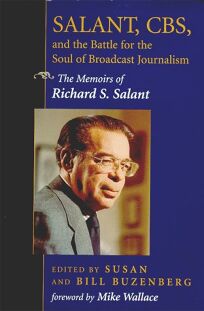 Richard S. Salant, "a lawyer, broadcast media executive, ardent defender of the First Amendment and Richard S. Salant, "a lawyer, broadcast media executive, ardent defender of the First Amendment and
passionate leader of broadcast ethics and news standards", served as president of CBS News from 1961
to 1964 and from 1966 to 1979. "If newsmen do not tell the truth as they see it because it might make waves, or if their bosses decide something should or should not be broadcast because of Washington or Main Street consequences, we have dishonored ourselves and we have lost the First Amendment by default." (Richard S. Salant, AZquotes)  The House Assasinations Committee did not ask the Columbia Broadcasting System to see controversial interviews filmed, but not aired, by CBS television 14 years ago with two witnesses in the President Kennedy assassination investigation according to a copyrighted report in the Washington Journalism Review. It says in its forthcoming issue that in CBS interviews with Lee Harvey Oswald's housekeeper," Earlene Roberts, "who saw him shortly after the assassination," and William Whaley, "the cab driver who is supposed to have driven Oswald to his boarding house after the shooting," what was reported by the Warren Commission. 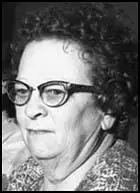 Earlene Roberts 1933-1966 Earlene Roberts 1933-1966
The magazine also alleges that CBS interviewers may have coaxed witnesses to conclusions in some 70 hours of interviews on film, but never used in the network's 1964 warren Commission report documentary. Although CBS has never publicly shown the interviews, WJR reports, film maker Emile de Antonio and Warren Commission Critic Mark Lane saw the films 14 years ago.  William Whaley 1905-1965 William Whaley 1905-1965"Both said then and both say now that the CBS interviewer led witnesses, some of whom, they claim, were saying things contrary to what the Warren Commission and the ensuing 1964 CBS documentary reported," WJR said in the report written by its editor, Florence Graves. The magazine quotes House Assassination Committee chief counsel G. Robert Blakey as saying that the film was not requested from CBS. "We sought no outtakes [film shot but not aired] from any news source because we were aware of the First Amendment principle involved." CBS and other broadcasters have long contended that outtakes, like a reporter's notes, should be considered privileged. De Antonio told WJR that the interview with the cab driver "contained statements which did not appear in the Warren report and which did not serve the report's conclusions." ( JFK Unit Reportedly Didn't Seek CBS Film, Washington Post, September 17, 1978 )
|
|
|
|
Post by Arjan Hut on Feb 15, 2020 11:28:05 GMT -5
298 Jack Beers' photo of the boxes in the sniper's nest
Related:
60 One TSBD hammer
66 The original and complete Alyea film68 One portion of (partially eaten?) fried chicken Researcher Richard Sprague asserts that the Dallas Morning News in late 1967 locked up a picture taken by its photographer Jack Beers which showed cartons on the sixth floor "Sniper's nest" before the Dallas Police moved them. (Mal Hyman, Burying the lead, p. 223) 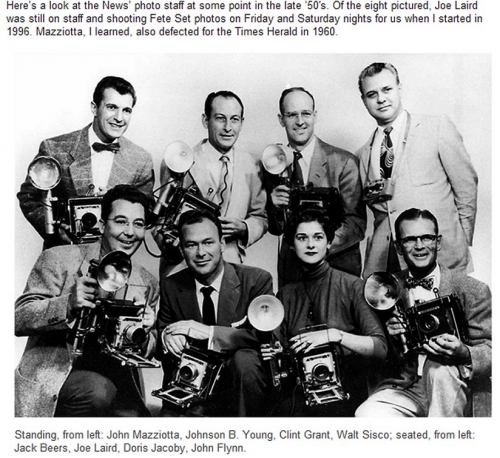 Beers was permitted to use his photographs commercially in a book that he published jointly with R. B. Denson, called Destiny in Dallas. If it were not for that event, researchers would probably never have seen Beers’s photographs. Once the Morning News editor, Mr. Krueger, discovered that the photographs demonstrated both conspiracy and the complicity of some of the Dallas police force, he locked them up. The pictures remain suppressed to this date. (Richard Sprague, The taking of America 1, 2, 3, third edition, 1985) Photographs coupled with testimony prove that the Dallas authorities altered the "sixth floor TSBD" evidence. The alterations were as follows: The original setting up of the bullet casings was too obviously faked. Sheriff Roger Craig arrived on the scene first and saw the three casings, side by side, neatly pointing in the same direction, just inches apart. By the time the "official" police photographer, Mr. Studebaker (who in reality was an amateur photographer with only two months experience), took pictures of them, the casings had been scattered around the floor by some member of the police force. Similarly, the original position of the boxes making up the so-called "gun rest", was so obviously inadequate, that the police moved them to look a lot more like a gun rest. Jack Beers, Dallas Morning News photographer, took photos of the boxes at 4 pm while they were still in their original position. This fact is confirmed by several photos taken at the time of the shots from outside the building showing the corner of the topmost box stacked three high. 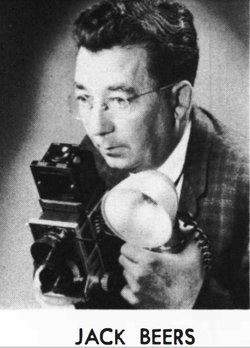 Ira Jefferson "Jack" Beers Jr. (1923-1975) Ira Jefferson "Jack" Beers Jr. (1923-1975)By the time Studebaker took photos of the boxes, used as Exhibits by the Warren Commission, it was dark, and the boxes had been rearranged so that they were only two deep, with the third one moved onto the window sill. Checking the position of the corner of this box as it would appear from the outside of the building, shows that it is in a quite different east-west lateral location than the corner actually showed itself to be in the photos taken at 12:30 pm to 1 pm. (Dillard, Hughes, Beers, Weaver, Willis, Murray). The net result of all this evidence collectively is the following proved conclusion: No one fired any shots on November 22, 1963 between noon and one pm from the sixth floor easternmost window of the TSBD. (Richard E. Sprague, THE APPLICATION OF COMPUTERS TO THE PHOTOGRAPHIC EVIDENCE, Computers and animation, 1970)
|
|
|
|
Post by Arjan Hut on Apr 12, 2022 10:11:36 GMT -5
527 Photo of wrapping paper bag in situRelated: 66 The original and complete Alyea Film118 Oswald's fingerprints taken off the rifle, the paper bag, and cartons at the TSBD 214 The sender of the brown paper-parcel
298 Jack Beers' photo of the boxes in the sniper's nestOne of the most questionable of all Warren Commission exhibits has to be CE 1302. This is the photograph, which purports to show "Approximate location wrapping paper per bag ...near window in southeast corner." The index to Volume 22 of the Warren Commission's 26 Volumes of Hearings and Exhibits, in which this appears on page 479, describes this exhibit as "Photograph of southeast corner of sixth floor of Texas School Book Depository Building, showing approximate location of wrapping paper bag and location of palm print on carton."  From those positive and uncomplicated descriptions, we would expect to see a photograph showing a bag made out of wrapping paper. In reality, the photograph shows no paper bag just a dotted line rectangle which has been printed on the photograph and which bears the legend: "APPROXIMATE LOCATION OF WRAPPING PAPER BAG." In accordance with normal police practice, other items of potential evidential value were photographed where they lay for example the rifle, the spent cartridges and the book carton with the palm print on it. Why, then, was the paper bag not afforded this attention? (Ian Griggs, No case to answer, 2005, p. 172)
|
|




















